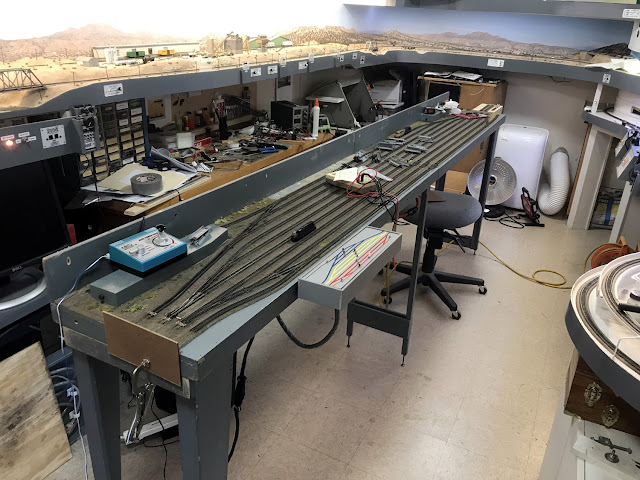I have been working on a major side project. I am doing an overhaul of the Ntrak club's 20 ft long staging yard. Specifically, trying to correct the problem we have been having with getting the voltages to switch between tracks on the yellow and blue Ntrak lines.
This yard uses Peco solenoids to move the turnout points and separate solenoids with the PL13 switch contacts to route the power to each of the yard tracks. Checking with an ohm meter these contacts were only intermittently making contact, making high resistance contact, and sometimes no contact at all. No wonder we were having problems.
As these devices are widely used and rather expensive to replace, I thought it would be a good topic to present here what I have done to rebuild some of these that were not working correctly.
The PC board can be separated from the black plastic housing by pushing with a small flat blade screwdriver through one of the openings on either end of the housing.
Once the board was removed from the housing it could be seen that the contact areas of the board had become oxidized and worn. Also, the two wiper parts bent at different angles, so it is likely one of them was not making good contact with the board.
I bent both contacts up at a sharper angle and tried to make that angle equal. I also made more rounded bends at the contact areas to get smoother movement and to make more contact with the PC board.
On some of these the wire lugs that are riveted onto the board broke off with handling and others were about to so I cut them all off and soldered the wires directly onto the bord from the top side. Any solder that came through to the bottom side needed to be filed smooth for the the board to fit correctly into the black plastic housing. The contact pads on the board were polished with a fine steel wool.
A small amount of NO-OX is applied with a tooth pick to the contact areas of the PC board.
With the contacts and the black plastic piece in place, the PC board can be snapped into place by pressing it straight down into the housing. Make sure the switch slides easily back and forth without catching and of course, re-test with an ohm meter.
















